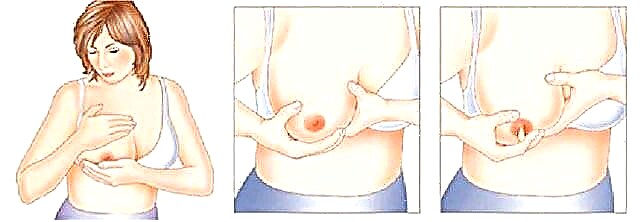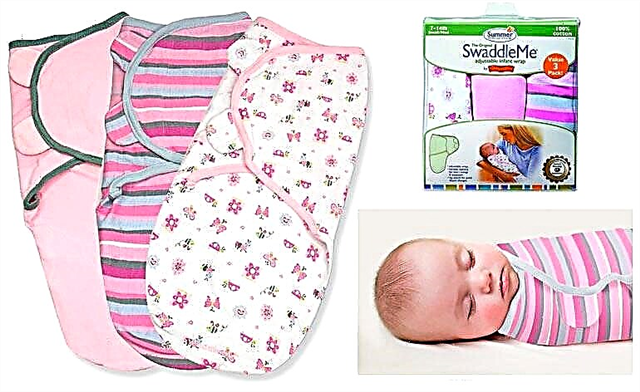Young mothers are concerned about many issues related to childcare. It is not so difficult to understand the part of feeding: it is clear that you need to feed newborns with breast milk, if it is not available - with an adapted milk formula. Whether the mixture is considered only food, or it replaces drinking, not everyone knows.

Baby and bottle
Features of water balance in children on IV
Pediatricians, visiting a young mother with patronage the next day after discharge from the hospital, give detailed instructions on caring for the baby. If for some reason the child is forced to feed with a mixture, the doctor informs that it is necessary to strictly observe the proportions during preparation.
For a newborn, formula is both food and drink. A special reduction in the amount of water will lead to a lack of fluid in the body. Parents should ensure that their infant receives adequate moisture to prevent:
- blood clots;
- the formation of constipation;
- drying out of the mucous membranes of the respiratory tract.
Attention! If there is no pathological loss of fluid, the child does not need supplementation.
The baby needs water to breathe. The mucous membranes of the nasal passages warm and moisten the inhaled air so that it becomes suitable for gas exchange in the lungs. Dry air cannot provide the body with oxygen, because only air with a relative humidity above 95% can participate in the gas exchange process. Whatever air the baby breathes, the mucous membranes of the nose will bring him to the required state so that the oxygen that comes from the lungs gets into the blood, and the unnecessary carbon dioxide comes out with exhalation.
When the room is hot and dry, the baby spends a huge amount of water to moisturize the mucous membranes and air. The load on the respiratory tract increases significantly. To facilitate the work of the body, parents should ventilate the room as often as possible, especially at night, to ensure comfortable nasal breathing during sleep.
When feeding the baby with formula, the mother prepares a portion with a constant density and a constant amount of protein. In hot weather or during illness, the baby needs less nutritious food, but according to the rules, you cannot violate the cooking scheme. Therefore, in between feedings, it is sometimes necessary to give the newborn water.

Baby on IV
How it differs from breastfeeding
Breastfed babies are less prone to dangerous fluid deficits. Mother's milk tends to adapt its composition to external conditions. Scientists have conducted several experiments with breastfeeding women who lived in different climatic conditions. As a result, it was proved that not only the mother's nutrition affects the composition and density of milk, but also the environment. In cold weather, characterized by insufficient light, the mother's body produces more fatty and denser milk. While the summer heat and excess sun rebuild a woman's body so that it produces less fatty milk, which has more water. Therefore, breastfed newborns do not need to be supplemented with water, if the body does not suffer from pathological fluid loss.
Do I need to supplement the baby
The popular pediatrician, Yevgeny Komarovsky, answering the question whether it is necessary to add water to the baby during artificial feeding, claims that if the parents manage to maintain optimal air parameters in the room and the baby does not lose a large amount of fluid, then there is definitely no need to add water to the children of the first month of life ...
Up to 6 months, it is enough for a baby to receive water along with the formula, which he uses instead of breast milk. However, if situations arise in which the baby loses a large amount of moisture, supplementation with clean water is required.

Temperature is the cause of pathological moisture loss
Factors causing pathological fluid loss:
- vomiting;
- diarrhea;
- increased body temperature;
- dry indoor air;
- overheating of the air in the room.
During intestinal infections, the child loses a huge amount of water due to diarrhea and vomiting. High body temperature forces the baby to sweat, with sweat, moisture also leaves the body.
Important! Most intestinal infections can go on smoothly at home if adults are able to water the baby. As a rule, children do not die from terrible diagnoses, but due to dehydration, which arose as a result of the disease.
Komarovsky suggests not to be lost in guessing how much water a newborn needs to drink, but to offer the child a bottle of clean water an hour after feeding and see if he will drink it or not. As a rule, children with an undisturbed water-salt balance spit out the bottle, refusing to drink water.
Council. If a healthy child drinks greedily an hour after eating, parents need to identify and correct their mistakes, namely to put in order the air condition in the room.
How much water does a baby need per day on IV
Newborns, that is, children under 4 weeks old, are unable to consume more than 90 ml of the formula in one feeding. This amount of water is added to a single serving of the newborn. The milk eaten will be digested within 2-2.5 hours, which means that from feeding to feeding, the baby's stomach is not completely empty. This means that the additional use of water will be small.
Pediatricians claim that a thirsty newborn will not drink more than 10 ml of liquid, but this is an individual matter. Therefore, it is recommended to offer a bottle of 30 ml so that the child can drink as much as he needs.
The water temperature should be close to body temperature. This will ensure the rapid absorption of fluid into the bloodstream and the restoration of the water-salt balance. If the baby is given cool water, it will stay in the stomach until it warms up to body temperature. As a result, even after drinking water, the child will feel thirsty, requiring a supplement.

Drinking water
Parents should understand that the refusal of a child up to 6 months from water means that adults were able to create comfortable conditions for the baby's life, as a result of which the small body receives the required amount of liquid along with the mixture. It is unacceptable to force drink babies. Excess water in the body is no less dangerous than its deficiency.
How to properly give water to a newborn
Doctors say it is dangerous to give a bottle of water to babies who are breastfed because, once they know light sucking, they will refuse to work while sucking breast milk. Therefore, if it becomes necessary to water or feed the baby with a bottle, you need to carefully choose the size of the hole. Newborn nipples are marked "0+". This means that it will be as difficult for a child to suck water from it as milk from a mother's breast. Typically, these nipples have no more than one narrow opening.
The best drink for a baby during the first 6 months of life is still mineral water with a neutral taste. Boiled water is not suitable for a child, because it does not contain the required amount of salts and minerals. Tap water can be contaminated due to a poor-quality section of the water supply system, which flows from the source to the apartment. If it is not possible to purchase mineral drinking water without gas and a sharp taste, you can independently prepare a drink from a ready-made dry mixture sold in pharmacies. These are called oral rehydration agents.
Attention! Dilution proportions are indicated on the packaging. As a rule, one sachet must be dissolved in 1 liter of boiled water.
The absence of such a powder in the home medicine cabinet should not become a reason for panic, because such a solution can be prepared independently from the ingredients available in every kitchen:
- 1 liter of boiled water;
- 3/4 teaspoon salt
- 1/2 teaspoon of baking soda;
- 1 tbsp. spoon of sugar.
The ingredients dissolve in warm water and can be used as a drink for an infant.
When to give
According to the recommendations of the World Health Organization, only those children who have pathological fluid loss need supplementation. Until the baby is able to tell adults about his needs, parents need to be able to identify incipient dehydration by the following signs:
- the diaper stays dry for more than 2 hours in a row;
- children's crying is not accompanied by lacrimation;
- the skin has become pale;
- the baby became lethargic, drowsiness appeared;
- lack of saliva in the mouth.
In order not to bring the situation to the appearance of the first signs of dehydration, you need to be able to prevent them and give your baby some water if:
- the child is sweating;
- he has a fever;
- parents are unable to reduce the indoor temperature to 20-22˚C;
- the child is vomiting.
Attention! If the parents manage to maintain the humidity in the room at a level between 55 and 70% and the air temperature not higher than 22˚C, the baby does not need additional water with an undisturbed general condition.
How often to offer water
How much water to give to a bottle-fed newborn depends on how much of the formula and how long ago it was eaten. In hot weather, it is allowed to offer water to the child in response to each crying attack. It is believed that children cannot endure the feeling of thirst in silence. Therefore, feeling the need for supplementation, the newborn will certainly cry. A mother who recently fed a baby with a formula should give him water if the time for the next feeding has not yet come.
Correct capacity
If you cannot find a bottle with such a nipple, the holes in which are not wider than those in the mother's breast, you will have to water the baby from a teaspoon. If the child is on the IV, don't worry about the size of the holes. The only condition that they must meet is not to force the child to choke.

Feeding cup not like a feeding bottle
Some pediatricians recommend dividing containers according to the appearance and type of nipple into those from which the child receives the mixture, and those from which he drinks. Today there is a wide selection of sippy cups that have a flat nipple that has nothing to do with the shape of the mother's nipple. Psychologists suggest that the bottles should differ in color or shape. This will allow in adulthood the baby to tell his mother exactly what he wants: to eat or drink. Knowing the water bottle looks like, the baby can pull the handles to it when he is thirsty.
The main task of adults is not to find out how much water a baby can drink, but to provide optimal conditions for a comfortable life for a child. If a humidifier is operating in the room, the room is regularly ventilated, and the air temperature does not exceed permissible values, the newborn will not need to be supplemented.



